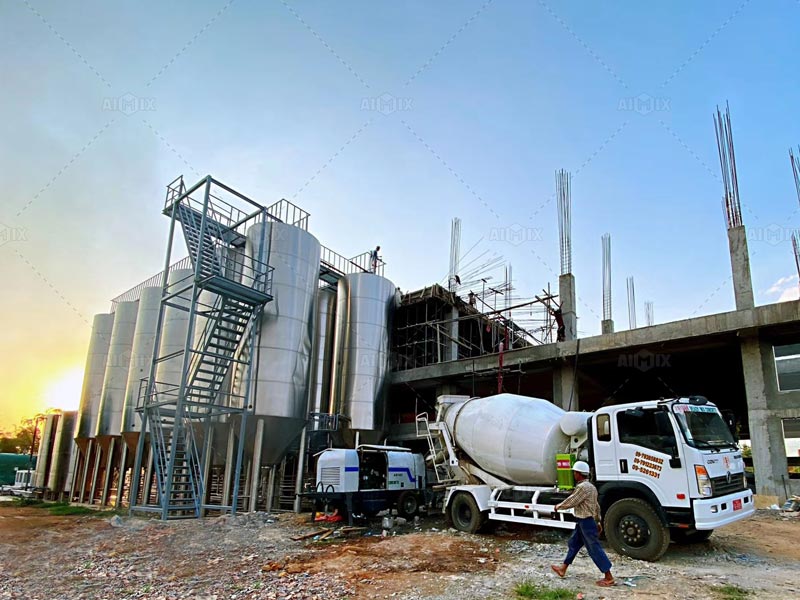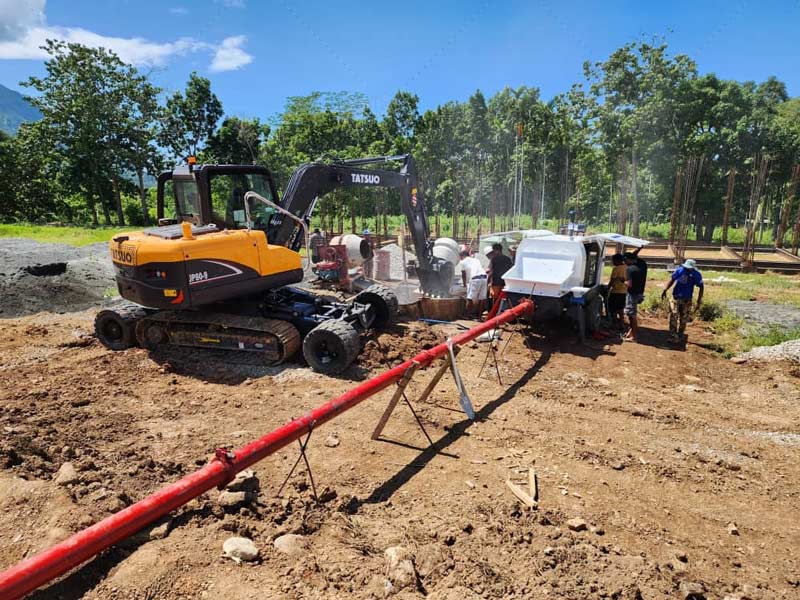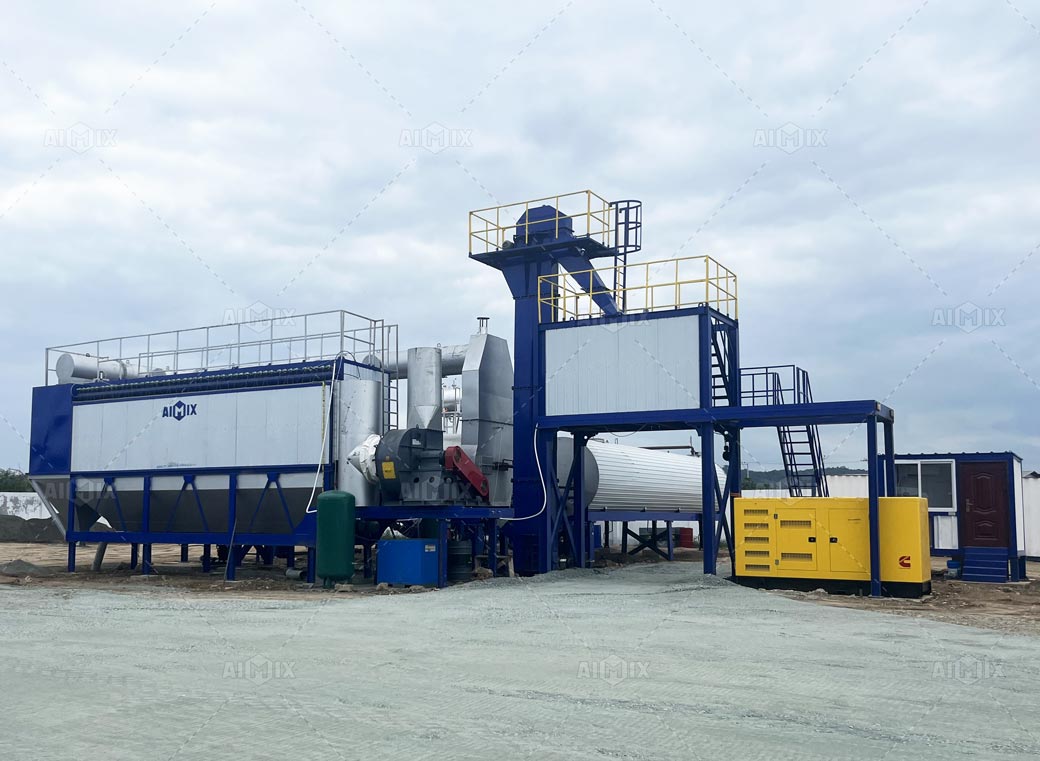How Predictive Maintenance Extends The Service Life Of Mobile Aggregate Plants
Predictive maintenance transforms maintenance from a reactive fire drill into a proactive, data-driven discipline that keeps machines running longer and safer. By instrumenting critical components, analyzing trends, and scheduling interventions before failures occur, operators can extend the service life of mobile aggregate plants while stabilizing output quality and operating costs. The approach works across plant types—from a compact mobile line feeding a small quarry to a multi-stage aggregate crusher plant(planta chancadora de aridos) producing several commercial gradations—and it scales with your digital maturity.
What Predictive Maintenance Really Means
Predictive maintenance is not just “good inspections faster.” It is a closed-loop process that combines sensors, data acquisition, analytics, and targeted work orders. Instead of fixed-interval part changes or waiting for alarms, the system watches component health in real time and compares it with learned patterns of deterioration. For a mobile stone crusher plant, that means catching bearing damage in the screen before it throws a belt, or spotting rising motor current on a primary jaw that signals jaw die wear or a tight nip angle.
From Data To Decisions
The backbone of predictive maintenance is continuous or periodic condition monitoring. Vibration, temperature, acoustic emissions, oil debris, and motor current signature analysis each reveal a slice of component health. Data is logged to a PLC or an edge device and then pushed—via wired, Wi-Fi, or cellular connectivity—to a historian or cloud platform. Analytics detect trends and anomalies. The output isn’t a raw graph; it’s a prioritized list of actions aligned to risk and production targets.
Why Mobile Plants Benefit More
Mobile plants are exposed to wider environmental swings—dust, humidity, shock loads from frequent relocation, and inconsistent power supply. These stressors accelerate fatigue in frames, bearings, couplings, and electrical components. Predictive maintenance cushions that variability by providing early warnings and allowing planned maintenance at logical breaks in the schedule, like a material changeover or a short shift.

Components And Failure Modes To Monitor
Crushers: Jaws, Cones, And Impactors
For primary and secondary crushers, monitor bearing vibration (overall velocity and envelope acceleration), bearing temperature, hydraulic pressure, and motor current. Trending current against throughput highlights choking or excessive recirculation. Oil analysis detects wear metals from gears and bearings before they escalate. Early interventions—jaw shim adjustments, liner changes, or lubrication corrections—extend the useful life of the core machine in any aggregate crusher plant.
Screens And Feeders
Screens suffer from high-frequency vibration and unbalanced loads. Baseline their orbital motion and monitor for shifts in amplitude or phase that signal cracked side plates, loose bolts, or failing bearings. Overheated screen bearings are a classic root cause of emergency stops; a single temperature trend can save a week of downtime.
Conveyors And Drives
Track pulley alignment, belt tension, idler noise bands, and gearbox oil condition. Current spikes on VFD-driven conveyors may indicate material buildup or misalignment. Predictive alerts let you replace a failing tail pulley bearing during routine greasing instead of in the rain at 2 a.m.
Power And Controls
Voltage imbalance, phase loss, and poor grounding shorten motor life. Logging power quality protects expensive electrics and reduces nuisance trips. In a modern stone crusher plant(planta trituradora de piedra), the centralized control cabinet can flag reverse rotation risks and phase loss before start-up, avoiding catastrophic damage.
Building A Predictive Maintenance Workflow
1. Instrument What Matters
Start with critical assets that cause the longest stoppages: the primary crusher, the main screen, and the longest conveyor. Add triaxial accelerometers on bearings, RTDs for temperature, and current transformers on major motors. If budget is tight, begin with portable data collectors and expand to permanent sensors later.
2. Establish Baselines And Thresholds
Collect data under known good conditions to set acceptable ranges. Define alarm thresholds with both absolute limits and rate-of-change rules. Seasonal adjustments may be necessary for sites with extreme temperature or humidity swings.
3. Integrate With Your CMMS
Predictive insights must become work orders. Link your analytics to a maintenance system so that a rising bearing temperature creates a planned task—parts ordered, tools reserved, labor scheduled. Closing the loop is what turns “interesting graphs” into longer service life.
4. Train Teams And Standardize
Teach operators to interpret key dashboards and to capture contextual notes: feed changes, blasting patterns, weather. Standard lubrication practices and torque checks make predictions reliable. A predictive program is only as strong as its data discipline.
Life Extension, ROI, And Cost Control
Stretching Component Lifecycles
Catching early-stage defects prevents secondary damage. For instance, replacing a $300 bearing before it grenades can save a $10,000 shaft and several days of lost production. Extending wear part intervals by even 10–15% on a high-production line materially improves annual output, especially where spares lead times are long.
Stabilizing Output Quality
Predictive adjustments maintain crusher closed-side settings and screen motion profiles within targets, keeping gradation curves tight. Fewer out-of-spec loads reduce rework, customer complaints, and hidden costs across the supply chain.
Clarifying Total Cost And Pricing
When operators understand the real cost drivers—energy, wear parts, and labor—they can quote more confidently and evaluate the stone crusher price(trituradora de piedra precio) landscape more rationally. Machines supported by strong predictive maintenance histories often command better resale values and lower financing risk, because their uptime and cost profiles are documented.
Practical Tips For Mobile Fleets
Plan Around Moves
Relocation is the perfect moment for inspections, NDT on critical welds, torque checks, and recalibration of sensors. Build a “move checklist” that pairs mechanical tasks with data verification to keep the predictive model accurate for your stone crusher plant.
Protect Sensors In Harsh Conditions
Use armored cabling, IP67 enclosures, and strategic sensor placement to minimize damage from rocks, water, and cleaning routines. Label everything clearly so modular units can be connected correctly after transport.
Use Edge Analytics For Low-Connectivity Sites
Where cellular coverage is weak, process first-level analytics at the edge and sync summaries when connectivity returns. Operators still get local alarms, while supervisors see trend snapshots later.
KPIs To Track For Continuous Improvement
Mean Time Between Failures (MTBF) And Mean Time To Repair (MTTR)
Increasing MTBF while reducing MTTR is the clearest evidence that predictive maintenance is extending service life. Pair these with planned maintenance compliance to confirm discipline.
Condition-Based Work Ratio
Measure the percentage of maintenance hours triggered by condition data versus calendar intervals or breakdowns. As the ratio rises, emergency repairs should drop.
Energy Per Ton
Track kWh/ton for the line. Rising energy consumption at constant throughput often signals mechanical inefficiency—worn liners, misaligned belts, or clogged chutes—that predictive analytics can pinpoint.

Getting Started Without Overcomplicating It
Begin with one train on one site. Instrument the primary crusher bearings and motor, the top screen bearings, and the longest conveyor gearbox. Collect 60–90 days of data, set thresholds, and run a pilot. Use quick wins—like detecting a degrading screen bearing—to secure buy-in and budget for broader rollout across your aggregate crusher plant portfolio. As confidence grows, expand to oil analysis, thermal imaging routes, and motor current signature diagnostics. Over time, you’ll have a unified view across sites, allowing smarter spare parts stocking and better utilization of mobile assets.
Conclusion
Predictive maintenance is a strategic lever for extending the service life of mobile aggregate plants. By turning raw sensor data into timely, targeted actions, operators reduce unplanned downtime, protect high-value components, stabilize quality, and clarify true operating costs. Whether you manage a compact stone crusher plant near an urban recycling yard or a multi-stage mobile line feeding remote infrastructure projects, a disciplined predictive approach protects production today and preserves asset value tomorrow. It also brings transparency to investment decisions, helping you compare options and the real stone crusher price beyond the sticker—factoring in uptime, energy, and lifecycle support that ultimately determine profitability.
Subscribe to unlock premium content
Sed at tellus, pharetra lacus, aenean risus non nisl ultricies commodo diam aliquet arcu enim eu leo porttitor habitasse adipiscing porttitor varius ultricies facilisis viverra lacus neque.



